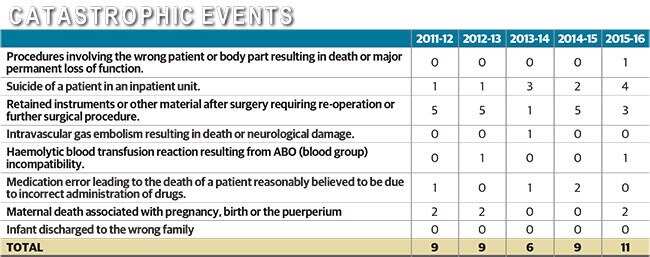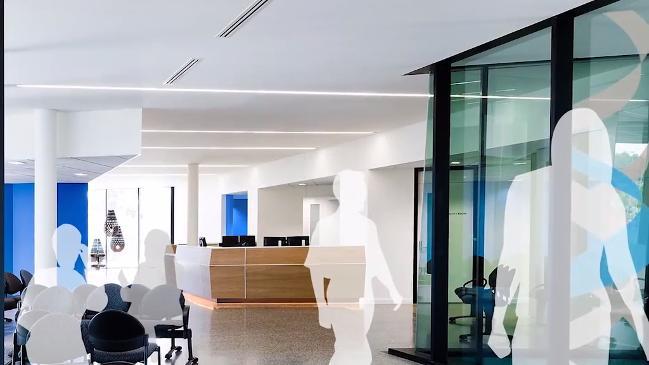Medical disasters at South Australian hospitals include instruments left inside three patients
ELEVEN medical disasters in SA public hospitals involving serious harm or death included three surgical patients who had items left inside them and four people who took their own lives.

SA News
Don't miss out on the headlines from SA News. Followed categories will be added to My News.
- More preterm babies born — and surviving
- Three-year affair between RAH radiologists ended in allegations
- Coding errors cause 300,000-plus mismatches in medical imaging data
ELEVEN medical disasters in South Australian public hospitals involving serious harm or death included three surgical patients who had items left inside them and four people who took their own lives.
A Productivity Commission’s report on government health services in 2015-16, to be released today, also reveals a case in SA where a procedure “involving the wrong patient or body part resulted in death or major permanent loss of function”.
It was the first such case in SA in five years. No specifics of cases were given, including whether botched procedures resulted in an actual death or permanent disability, or the hospitals involved.
The data also shows there werefour suicides in SA inpatient units, the highest recorded in five years.
SA’s 11 “sentinel events” — a small but significant number of adverse incidents involving serious patient harm or signalling a serious system failure — were among 82 such incidents across Australia.

NSW topped the list with 34 sentinel events, followed by Victoria with 16, Queensland with 15, then SA with 11.
They included 26 cases where instruments or material was left inside patients requiring further surgery for removal, and five cases of wrong patient or body part being operated on resulting in death or disablement. In total, 26 people died by suicide while in an inpatient unit.
No infant was sent home with the wrong family in the past five years in any jurisdiction — which would be logged as a sentinel event.
The report also shows waiting times in SA hospital emergency departments were among the worst in the nation in 2016-17.
While all patients needing resuscitation were seen within the target of two minutes, just 67 per cent of the next category of ‘emergency’ patients were seen within the target of 10 minutes. In the next category, ‘urgent’ patients who are supposed to be seen within 30 minutes, only 52 per cent were seen on time.
Ambulance response times have also blown out in both Adelaide and across SA to the longest in a decade.
The data follows complaints by the ambulance union about staff shortages and having crews forced to “ramp” in hospital carparks due to full EDs.
The report shows:
FEDERAL, state and territory government recurrent spending on health services was estimated to top $96.7 billion in 2015-16, including $61.4 billion on public hospitals.
IN 2015-16, government real recurrent expenditure on public hospitals was $2551 per person for Australia, up from $2366 in 2014-15.
LIFE expectancy has risen from 55.2 for men and 58.8 for women in 1901-10, to 80.4 and 84.6 respectively in 2014-16.
IN 2015, 5 per cent of babies born in Australia were of low birth weight but the proportion with low birth weight born to Aboriginal and Torres Strait Islander mothers was more than twice that for babies born to non-indigenous mothers.
THE most common causes of death in 2016 were cancers and circulatory conditions including heart disease, heart attack and stroke.
THERE were 3.5 million incidents resulting in 4.4 million ambulance service responses to attend to 3.3 million patients and recurrent spending across Australia was approximately $3.2 billion, or $130 per person.
If you or someone you know needs help, call Lifeline on 13 11 14 or the Kids Helpline on 1800 551 800



